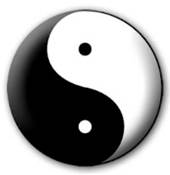Being aware of these principles is important at the beginning of Taiji learning & practice. It’s advisable that after a student has learned the basic movements of the particular style they are studying, a focus on each of these principles one-at-a-time for several weeks to one (1) month, then going back to do the same with the next, and so on, is best for a more effective learning experience. We forget, so reviews are crucial even for the serious practitioner (and master). This NEVER stops...ever!
- Do the movements SLOWLY without stopping. They should be continuous with no evidence of a break between one and the next.
- Imagine moving against a gentle RESISTANCE. When moving in water you will notice the dense feeling so imagine that the air around is the same. This helps to cultivate awareness of your inner energy force (Qi).
- Be aware of the WEIGHT TRANSFERENCE when going forward & backward, left & right for beginning and completing the stepping movements.This is important for improving balance, mobility, and coordination.
- Maintaining an UPRIGHT POSTURE while being aware of one’s BODY ALIGNMENT, all without tension, is crucial to the relaxed nature of Taiji. Softly bending one’s knees rather than maintaining a stiff military manner will help improve the practice of Taiji because Qi flows best in a softly aligned body. Hunching forward hinders Qi flow while compromising balance, and leaning backward creates extra strain to the spine.
- KEEP YOUR MUSCLES and JOINTS SOFT & RELAXED. The mind is a marvelous instrument when you focus on gently stretching your muscles & joints internally. Concentrate on imagining that your head is magically suspended all the way up into the Universe down to your toes like a puppet on a string. The lower limbs will also gently expand from within when you softly bend your knees and sink your spine almost like you are getting ready to sit down.
- FOCUS on your movements and be AWARE of what you are doing. Eventually it will come naturally as related to these Principles.
MORE AWARENESS FOR TAI CHI PRACTICE
- JING, roughly translated, means "mental quietness or serenity.” While Taiji is considered a moving meditation, this meditation is different from other more familiar forms of it. Taiji helps a student to become serene from within while allowing awareness of one’s environment by quieting the mind. It takes a while to achieve it but it’s pure heaven when managed naturally without much effort. It’s a quiet Focus.
- SONG is often translated as a type of “controlled relaxation of the mind.” This is possible by imagining all of the joints opening, loosening, and stretching from within. With the upper limbs, loosen wrists & finger joints by stretching them out and in the opposite direction. In the torso, it’s a vertical loosening almost like imagining your spine being like a string stretching at both ends. With the lower limbs, stretch the hip & knee joints gently outwards so that your crotch forms an arch. When doing these exercises it’s impossible to be tense, therefore it’s “controlled relaxation.” This helps to build internal strength, improve flexibility, and helps the Qi flow.
- CHEN means “sinking.” When learning Taiji from a teacher you will become familiar with the instructions “sink your Qi into the Dan Tian.” The Dantian is the area three-finger widths below the belly button and is central to everything done in Taiji. Awareness of the Dantian will strengthen the internal structures of the body and improve inner strength as well as the spine. Chen enhances stability, SONG and Qi cultivation. Exhaling facilitates “sinking Qi into the Dantian” which in turn keeps your mind JING and loosens the joints. When breathing out the warm & heavy feeling in the Dantian is what “sinking your Qi” feels like.
- HUO means “agility.” Powerful Qi, being strong, and having a good mental state are attributes that are made even more effective with “agility.” This comes from regular practice using proper body posture, weight transference, control of movements, loosened joints and internal strength. Being strong, having powerful Qi and being in a good mental state are essential, and these attributes will be even more effective with better agility.
COPYRIGHT PROTECTED.

